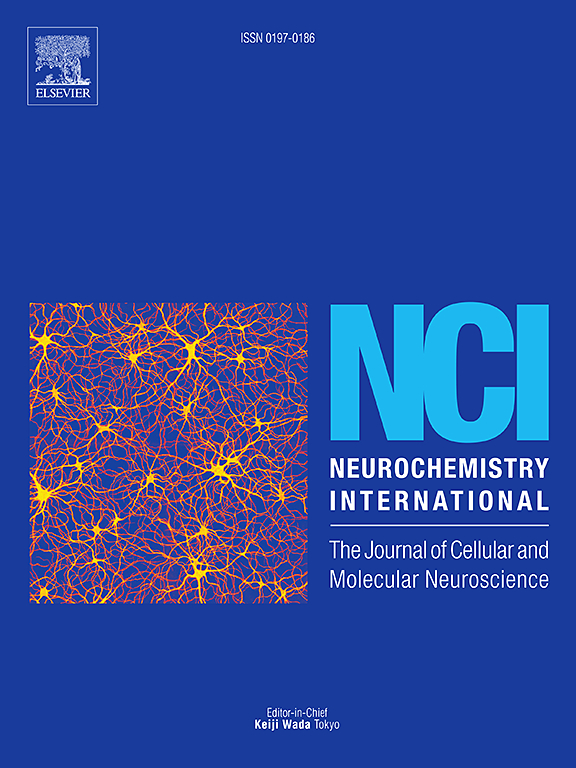Nrf2/HO1/NQO1轴对纤维肌痛患者抗氧化防御系统的神经营养增强作用
IF 4
3区 医学
Q2 BIOCHEMISTRY & MOLECULAR BIOLOGY
引用次数: 0
摘要
纤维肌痛(FM)是一种以慢性广泛的肌肉骨骼疼痛为特征的疾病,通常伴有疲劳、睡眠障碍和认知功能障碍。虽然病理生理是多因素的,但越来越多的证据强调氧化应激和线粒体功能障碍在这种疾病的发展中的关键作用。特别是Nrf2/HO-1/NQO1抗氧化轴在对抗氧化损伤和维持细胞稳态中起着至关重要的作用。Boswellia (BS)是蕨科植物的一个属,包括大约20个物种,分布在撒哈拉以南非洲、阿拉伯半岛和印度次大陆。在阿育吠陀医学中,它传统上被用于治疗糖尿病、发烧,以及某些心血管疾病、皮肤病和神经系统疾病。乳香酸被认为具有抗炎、抗风湿和缓解疼痛的特性。本研究的目的是探讨BS提取物对利血平诱导的小鼠FM模型的有益作用。服用利血平后,氧化应激、神经炎症和行为改变(包括机械性异常性痛、痛觉过敏、焦虑和抑郁样行为)的标志物显著增加。每日口服100 mg/kg的BS可有效恢复这些病理变化。口服补充BS,通过抑制小胶质细胞和星形胶质细胞的激活,降低GFAP和Iba-1的表达,可以减少神经炎症,恢复神经递质水平,如去甲肾上腺素、多巴胺和血清素。此外,通过增加Nrf2的核易位及其随后下游靶标HO-1和NQO1的表达,限制脂质过氧化和ROS的产生,提高抗氧化防御能力。根据行为测试,BS显著降低了与FM相关的情绪缺陷和机械敏感性。我们的研究结果表明,BS整合具有神经保护作用,对氧化应激和神经炎症起作用,并表明它是治疗FM症状的一种可行的自然策略。本文章由计算机程序翻译,如有差异,请以英文原文为准。

Neuronutritional enhancement of antioxidant defense system through Nrf2/HO1/NQO1 axis in fibromyalgia
Fibromyalgia (FM) is a disorder characterized by chronic widespread musculoskeletal pain, and it is often accompanied by fatigue, sleep disturbance, and cognitive dysfunction. Although pathophysiology is multifactorial, increasing evidence highlights the pivotal role of oxidative stress and mitochondrial dysfunction in the development of this condition. In particular, the Nrf2/HO-1/NQO1 antioxidant axis plays a crucial role in counteracting oxidative damage and maintaining cellular homeostasis. Boswellia (BS) is a genus of plants in the Burseraceae family, which includes around twenty species found across sub-Saharan Africa, the Arabian Peninsula, and the Indian subcontinent. In Ayurvedic medicine, it has traditionally been used in the treatment of diabetes, fever, as well as certain cardiovascular, dermatological, and neurological conditions. Boswellic acids are thought to possess anti-inflammatory, anti-rheumatic, and pain-relieving properties. The purpose of this study was to investigate the beneficial effects of BS extract in a murine model of reserpine-induced FM. Following reserpine administration, markers of oxidative stress, neuroinflammation, and behavioral changes including mechanical allodynia, hyperalgesia, anxiety, and depression-like behaviors were significantly increased. Daily oral administration of BS at a dose of 100 mg/kg effectively restored these pathological changes. BS oral supplementation, by preventing microglia and astrocyte activation, as demonstrated by decreased GFAP and Iba-1 expression, BS decreased neurological inflammation and restored neurotransmitter levels such as norepinephrine, dopamine and serotonin. Futhermore, improved antioxidant defenses by increasing nuclear translocation of Nrf2 and subsequent expression of its downstream targets, HO-1 and NQO1, limiting lipid peroxidation and ROS production. According to behavioral tests, BS significantly reduced the emotional deficit and mechanical sensitivity linked to FM. Our findings indicate that BS integration has neuroprotective effects, acting on oxidative stress and neuroinflammation, and suggesting that it is a viable natural strategy for managing FM symptoms.
求助全文
通过发布文献求助,成功后即可免费获取论文全文。
去求助
来源期刊

Neurochemistry international
医学-神经科学
CiteScore
8.40
自引率
2.40%
发文量
128
审稿时长
37 days
期刊介绍:
Neurochemistry International is devoted to the rapid publication of outstanding original articles and timely reviews in neurochemistry. Manuscripts on a broad range of topics will be considered, including molecular and cellular neurochemistry, neuropharmacology and genetic aspects of CNS function, neuroimmunology, metabolism as well as the neurochemistry of neurological and psychiatric disorders of the CNS.
 求助内容:
求助内容: 应助结果提醒方式:
应助结果提醒方式:


